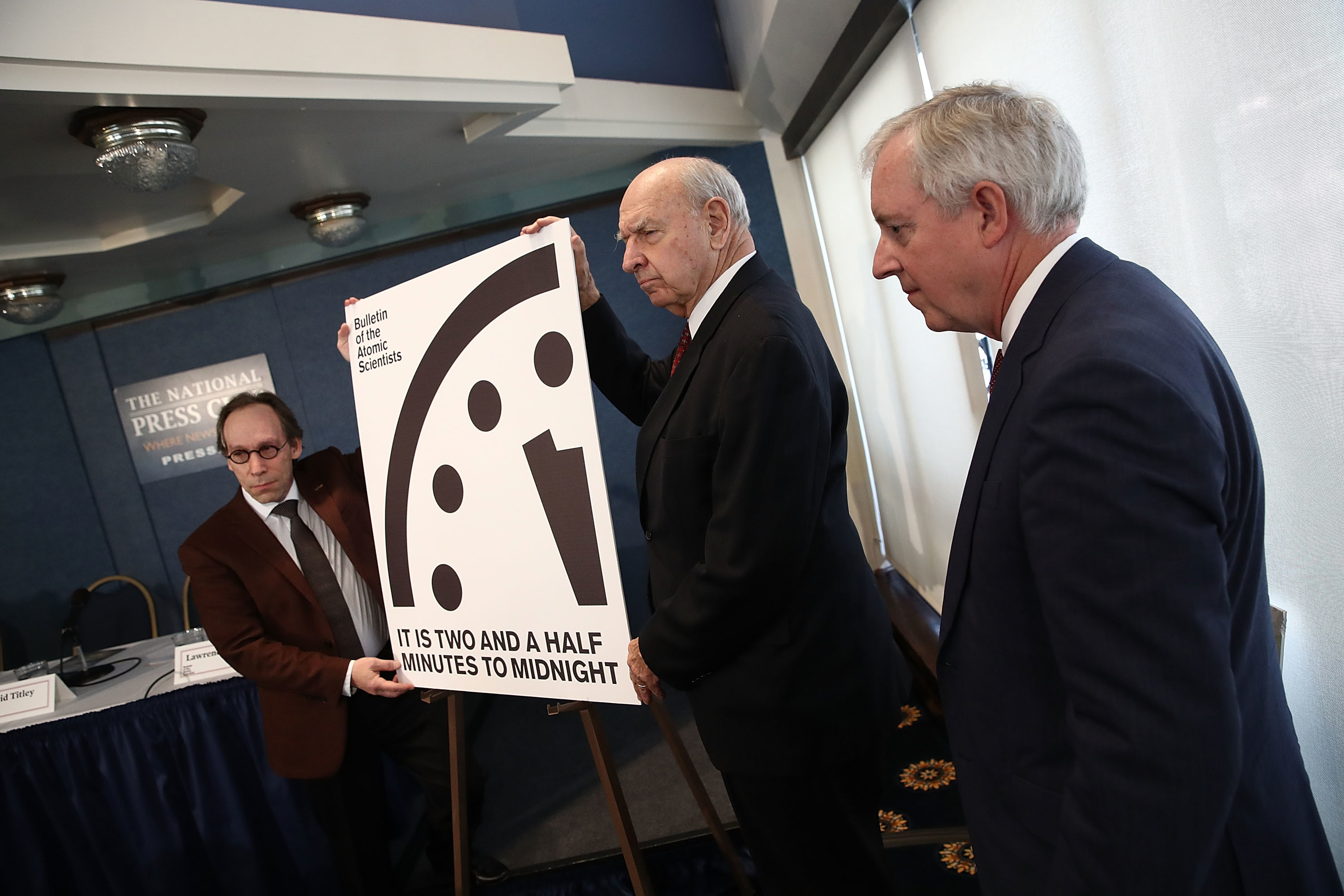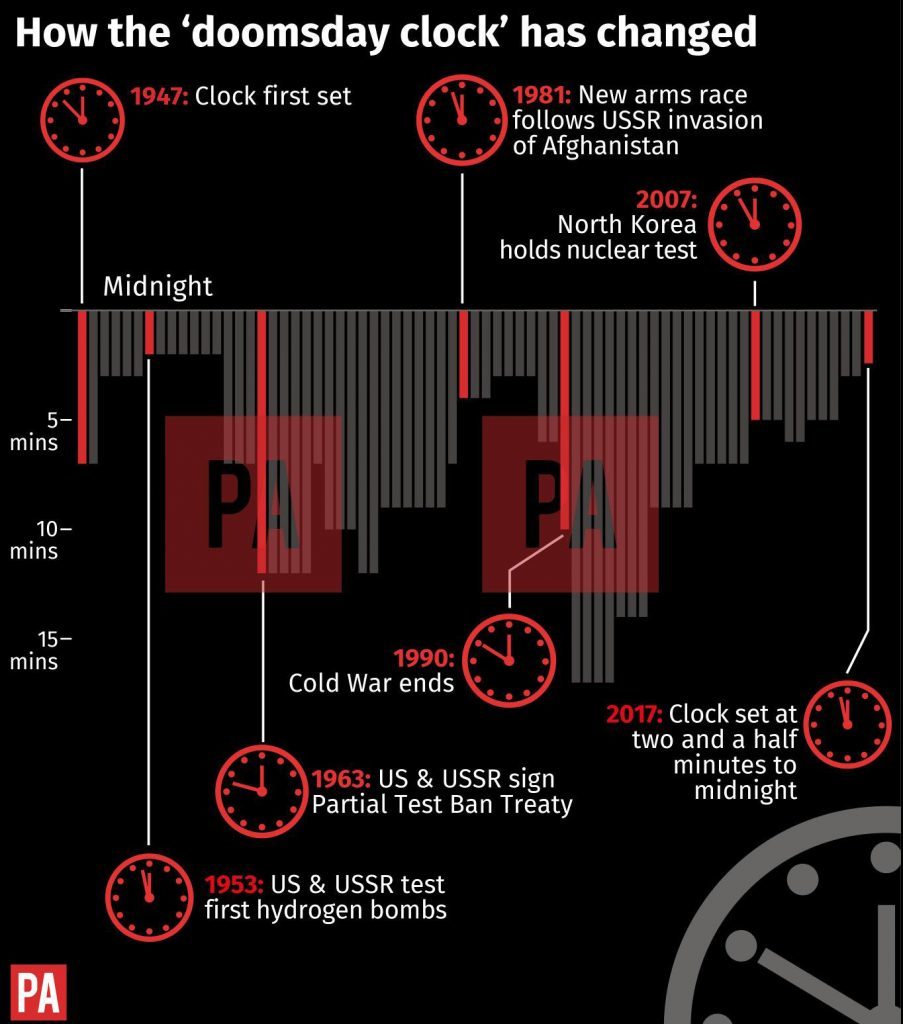
WE could be just two and a half minutes away from global catastrophe, according to scientists.
The chilling warning came as the keepers of the Doomsday Clock brought the time forward by 30 seconds earlier today.
The Bulletin Of The Atomic Scientists, a group of experts formed in 1945, calculate the time by considering the likelihood of nuclear Armageddon.
They also bear in mind other emerging threats such as climate change and advances in biotechnology and artificial intelligence.
Last year the clock remained where it had been set in 2015, at three minutes to midnight, but today brought a worrying advancement forward.
In a statement the Bulletin’s executive director Rachel Bronson, said: “Today’s complex global environment is in need of deliberate and considered policy responses.
“It is ever more important that senior leaders across the globe calm rather than stoke tensions that could lead to war, either by accident or miscalculation.”
READ MORE: Scientists to decide whether or not to adjust Doomsday Clock
The Science and Security Board noted: “Over the course of 2016, the global security landscape darkened as the international community failed to come effectively to grips with humanity’s most pressing existential threats, nuclear weapons and climate change…
“This already-threatening world situation was the backdrop for a rise in strident nationalism worldwide in 2016, including in a US presidential campaign during which the eventual victor, Donald Trump, made disturbing comments about the use and proliferation of nuclear weapons and expressed disbelief in the overwhelming scientific consensus on climate change.
“The board’s decision to move the clock less than a full minute — something it has never before done — reflects a simple reality: As this statement is issued, Donald Trump has been the US president only a matter of days.”
The closest the clock has ever come to striking midnight was in 1953, when the time was set at two minutes to 12.
It was in that year that the US took the decision to upgrade its nuclear arsenal with the hydrogen bomb, “a weapon far more powerful than any atomic bomb”.

Enjoy the convenience of having The Sunday Post delivered as a digital ePaper straight to your smartphone, tablet or computer.
Subscribe for only £5.49 a month and enjoy all the benefits of the printed paper as a digital replica.
Subscribe